- Home
- Quizzes
- My Quiz Activity
- Newsletters
- Sports Betting
- MY FAVORITES
- Add Sports/Teams
- SPORTS
-
NFL
- NFL Home
- Arizona Cardinals
- Atlanta Falcons
- Baltimore Ravens
- Buffalo Bills
- Carolina Panthers
- Chicago Bears
- Cincinnati Bengals
- Cleveland Browns
- Dallas Cowboys
- Denver Broncos
- Detroit Lions
- Green Bay Packers
- Houston Texans
- Indianapolis Colts
- Jacksonville Jaguars
- Kansas City Chiefs
- Las Vegas Raiders
- Los Angeles Chargers
- Los Angeles Rams
- Miami Dolphins
- Minnesota Vikings
- New England Patriots
- New Orleans Saints
- New York Jets
- New York Giants
- Philadelphia Eagles
- Pittsburgh Steelers
- San Francisco 49ers
- Seattle Seahawks
- Tampa Bay Buccaneers
- Tennessee Titans
- Washington Commanders
-
MLB
- MLB Home
- Arizona Diamondbacks
- Atlanta Braves
- Baltimore Orioles
- Boston Red Sox
- Chicago White Sox
- Chicago Cubs
- Cincinnati Reds
- Cleveland Guardians
- Colorado Rockies
- Detroit Tigers
- Houston Astros
- Kansas City Royals
- Los Angeles Angels
- Los Angeles Dodgers
- Miami Marlins
- Milwaukee Brewers
- Minnesota Twins
- New York Yankees
- New York Mets
- Oakland Athletics
- Philadelphia Phillies
- Pittsburgh Pirates
- San Diego Padres
- San Francisco Giants
- Seattle Mariners
- St. Louis Cardinals
- Tampa Bay Rays
- Texas Rangers
- Toronto Blue Jays
- Washington Nationals
-
NBA
- NBA Home
- Atlanta Hawks
- Boston Celtics
- Brooklyn Nets
- Charlotte Hornets
- Chicago Bulls
- Cleveland Cavaliers
- Dallas Mavericks
- Denver Nuggets
- Detroit Pistons
- Golden State Warriors
- Houston Rockets
- Indiana Pacers
- Los Angeles Clippers
- Los Angeles Lakers
- Memphis Grizzlies
- Miami Heat
- Milwaukee Bucks
- Minnesota Timberwolves
- New Orleans Pelicans
- New York Knicks
- Oklahoma City Thunder
- Orlando Magic
- Philadelphia 76ers
- Phoenix Suns
- Portland Trail Blazers
- Sacramento Kings
- San Antonio Spurs
- Toronto Raptors
- Utah Jazz
- Washington Wizards
-
NHL
- NHL Home
- Anaheim Ducks
- Arizona Coyotes
- Boston Bruins
- Buffalo Sabres
- Calgary Flames
- Carolina Hurricanes
- Chicago Blackhawks
- Colorado Avalanche
- Columbus Blue Jackets
- Dallas Stars
- Detroit Red Wings
- Edmonton Oilers
- Florida Panthers
- Los Angeles Kings
- Minnesota Wild
- Montreal Canadiens
- Nashville Predators
- New Jersey Devils
- New York Islanders
- New York Rangers
- Ottawa Senators
- Philadelphia Flyers
- Pittsburgh Penguins
- San Jose Sharks
- Seattle Kraken
- St. Louis Blues
- Tampa Bay Lightning
- Toronto Maple Leafs
- Vancouver Canucks
- Vegas Golden Knights
- Washington Capitals
- Winnipeg Jets
- NCAAF
- NCAAM
- Boxing
- Entertainment
- Lifestyle
- Golf
- MMA
- Soccer
- Tennis
- Wrestling
- More Sports
- RESOURCES
- My Account
- YB on Facebook
- YB on Twitter
- YB on Flipboard
- Contact Us
- Privacy Policy
- Terms of Service
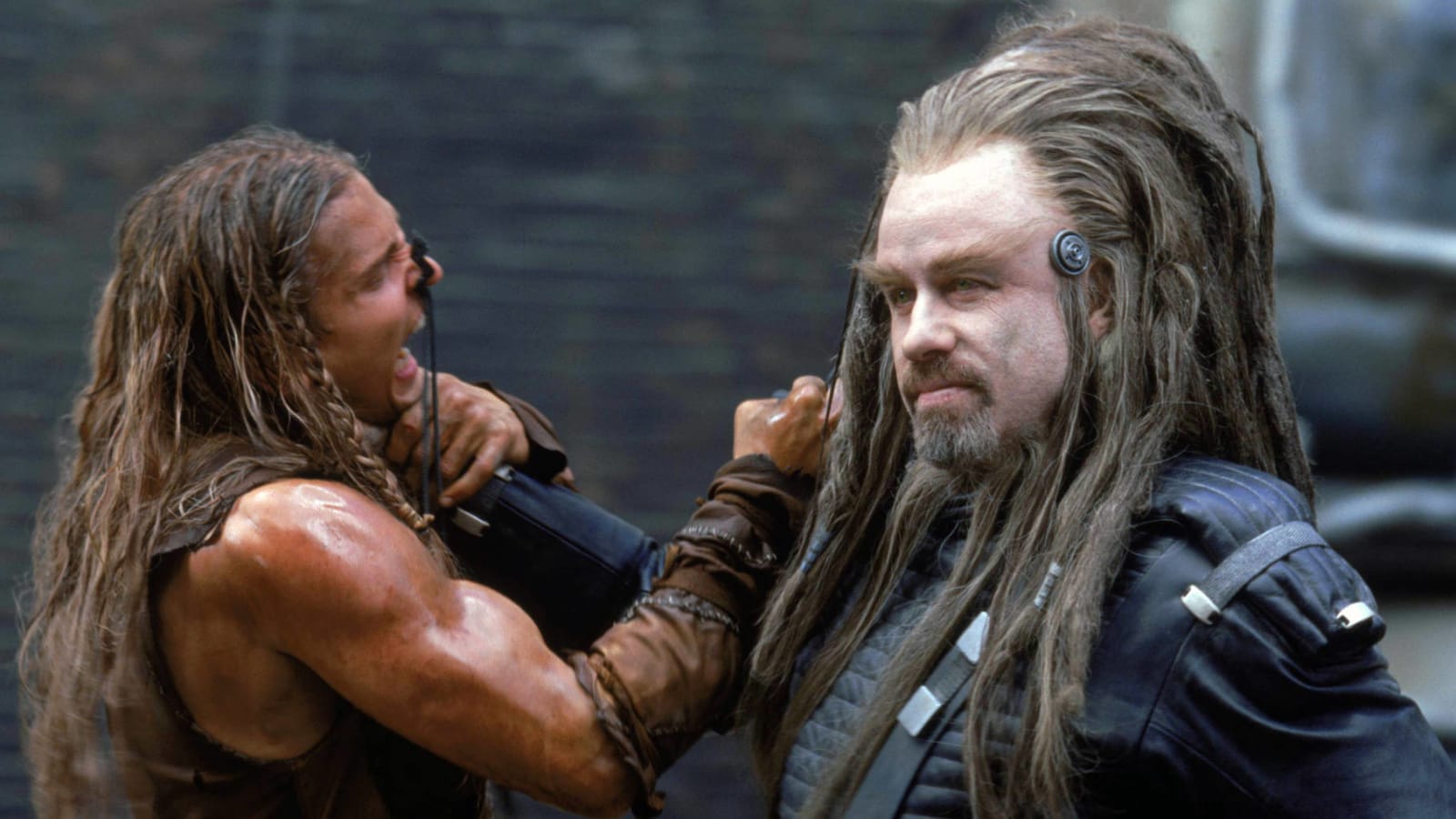
25 worst personal creative decisions in Hollywood history
Stardom is a heckuva drug. All it takes is one hit movie, album, or TV show and the world seems there for the conquering. Some entertainers hold it together via a mixture of humility and pragmatism; others lose their damn mind and buy an island. And then there are artists who mistake being talented in one field for virtuosity across the creative board or simply overvalue their popularity when they’re just getting started. TV stars bolt hit series too early. Movie stars cut vanity LPs. Successful directors turn down potential blockbusters out of arrogance. All this and much, much worse. Here are twenty-five of the worst creative decisions we’ve ever seen.
David Caruso quits "NYPD Blue" after one season

The red-haired David Caruso plugged away for a solid decade as a character actor in a string of mostly good to great movies (e.g. “An Officer and a Gentleman," “First Blood," “King of New York”) before breaking through in the fall of 1993 as the star of Steven Bochco’s edgy new cop drama, “NYPD Blue." The show’s destiny was clearly ensemble, but Caruso was the first season’s hunky hook, which, to his mind, meant he was due a raise for the second season. Had he held on, he might’ve become one of the highest-paid actors on television; instead, he bolted the show to take $1 million for the starring role in Barbet Schroeder’s remake of “Kiss of Death” and (reportedly) $2 million to $3 million for the co-lead (alongside Linda Fiorentino) in William Friedkin’s “Jade." Both films bombed, effectively ending Caruso’s bid for stardom. Seven years later, a humbled Caruso returned to television as the star of the terrible but popular “CSI: Miami." It all eventually worked out, but it didn’t have to be such a hard road (and there might’ve been an Emmy in it for Caruso had he stuck with “NYPD Blue”).
The Queen of Soul goes disco
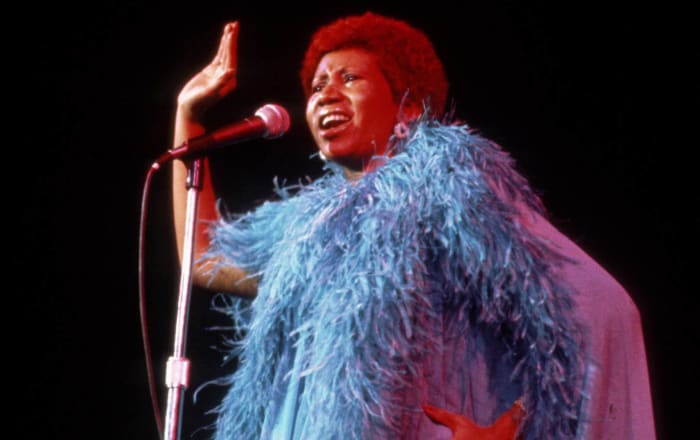
By the end of the 1970s, Aretha Franklin was in a creative and commercial slump. Despite the producing and songwriting efforts of her old pals Lamont Dozier and Curtis Mayfield, her albums were getting panned by critics and gathering dust on record store shelves. She needed to get hip to the sound that was moving records, which meant she had to cut a disco LP. While some rock and soul artists were able to manage this transition without alienating their audiences, Franklin’s “La Diva” sold more poorly than any of her ‘70s albums. Her heart clearly wasn’t in it. Franklin wisely cut ties with Atlantic Records and signed with Clive Davis’ Arista Records in 1980. She didn’t get it all back at once, but she finally found her way back to the top of the charts in 1985 with “Freeway of Love."
Laurence Fishburne turns down "Pulp Fiction"

Laurence Fishburne had more than proved himself throughout the 1980s with exceptional performances in “The Cotton Club," “School Daze” and “Gardens of Stone." After his blazingly brilliant turn in “King of New York," he landed the role that changed his career: Ike Turner opposite Angela Bassett’s Tina Turner in “What’s Love Got to Do with It." Career-wise, it was go time, and Fishburne deservedly wanted to be a leading man. So when a juicy part in a bizarre ensemble flick called “Pulp Fiction” hit his reps’ desks, they told him to turn it down. It might be a great part, but he’d be sharing the screen with a then washed-up John Travolta. So he passed and starred in the largely forgotten action-thriller “Bad Company." According to Quentin Tarantino, this decision also cost him Samuel L. Jackson’s role in “Die Hard with a Vengeance." He became a pop-cultural icon thanks to his turn as Morpheus in “The Matrix," but it’s hard not to consider what might’ve been had he gone against his agents’ wishes.
Will Smith turns down "The Matrix"
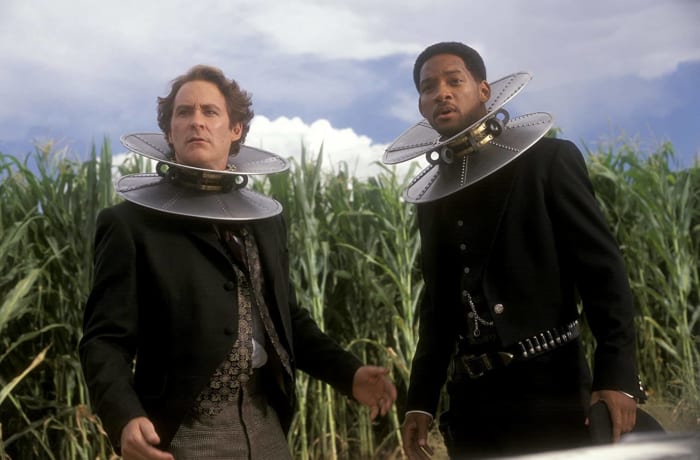
This really isn’t “disastrous” per se. Smith might’ve missed out on the cinematic phenomenon of 1999, but he earned his first Best Actor nomination two years later for “Ali” and rattled off a string of eight straight blockbusters between 2002 and 2008. Still, choosing to reteam with his “Men in Black” director, Barry Sonnenfeld, on a big-screen adaptation of a 1960s TV show best known today for being the movie in which maniac producer Jon Peters finally shoehorned in a giant spider…that’s an oopsie no matter what your options are. In Smith’s defense, he claims the Wachowskis’ pitch was poorly delivered, and that he had a hard time placing his trust in a directing team that had made only one movie (“Bound”) at that point. He also says he would’ve “f#$%ed up” the movie by forcing the studio to cast a white man (Val Kilmer) as Morpheus. This might all be true, but taking the year off to cut a thrash calypso LP would’ve been a better idea.
Dennis Miller joins the "Monday Night Football" booth
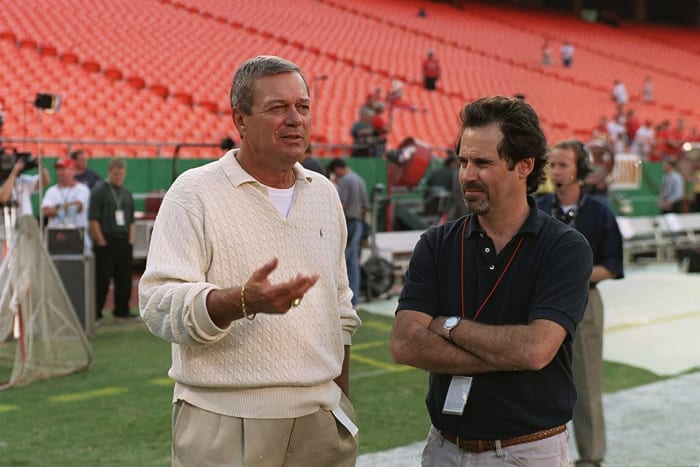
Dear Millennials and Gen Z-ers, there was a time — a long time, in fact — when Dennis Miller was one of the funniest standup comedians on the planet. He was irreverent, profane, and quick with arcane references that flaunted his erudition. He’s in the conversation for greatest Weekend Update anchor and hosted the enjoyable “Dennis Miller Live” on HBO for eight years. He didn’t need a bigger platform, but if one of television’s most durable franchises, “Monday Night Football, was offering…why not? Miller stifled his political opinions (which were antagonistic to both parties depending on the issue) but did not cut back on the obscure cultural allusions, which pıssed off the same anti-intellectual viewers who loathed Howard Cosell’s heightened vocabulary and those who didn’t want some gridiron dilettante mucking up the flow of the game. ABC embraced the Miller controversy at first, going so far as to run an annotated postgame recap of his comments, but John Madden’s exodus from Fox in 2002 gave it an out, and the network enthusiastically took it. As for Miller, HBO canceled his show the same year, and he inexplicably decided to never be funny again.
Mickey Rourke's boxing career

By 1973, Mickey Rourke had compiled an impressive amateur boxing record of 27 wins (including six straight first-round knockouts) and three losses. But after giving what the Actors Studio’s Elia Kazan called “the best audition in 30 years," Rourke quit the ring and pursued an acting career. He was in his early 30s when he exploded off the screen with a pair of Brando-esque turns in “Diner” and “The Pope of Greenwich Village” and seemed on the cusp of taking residency in the pantheon alongside De Niro, Pacino, Hoffman, and so on. Then came the questionable role choices and tales of on-set misbehavior. Saying he’d lost respect for himself as an actor, he returned to boxing where he compiled an 8-0 record at great cost to his physiognomy. Rourke claims the subsequent reconstructive surgery was “a mess” and, looking at his expressionless visage nowadays, it’s hard not to agree. He’s still a major talent (he deserved the Best Actor Oscar for “The Wrestler”), but the beauty is all gone.
Neil Young cuts a rockabilly album

Neil Young was riding high on the heels of his live masterpiece “Rust Never Sleeps” when he signed with Geffen Records in the early 1980s. Alas, the music mogul had hooked up with Young right as he was entering an experimental phase. While a number of influential critics dug the electronic “Trans," no one could make sense of Young’s abrupt transition to '50s rock/doo-wop with “Everybody’s Rockin’." Clocking in at 26 minutes, Young and his backing band, The Shocking Pinks, delivered six weightless originals and four deeply uninspired covers. David Geffen hated it so much that he sued Young for recording “unrepresentative” music. Some fans felt Young had sold out by shooting a music video (though it was far too weird to be considered commercial). Young’s next few records were some of his least inspired, but he finally recovered in 1989 with the blistering “Freedom."
Bob Dylan paints a "Self-Portrait"
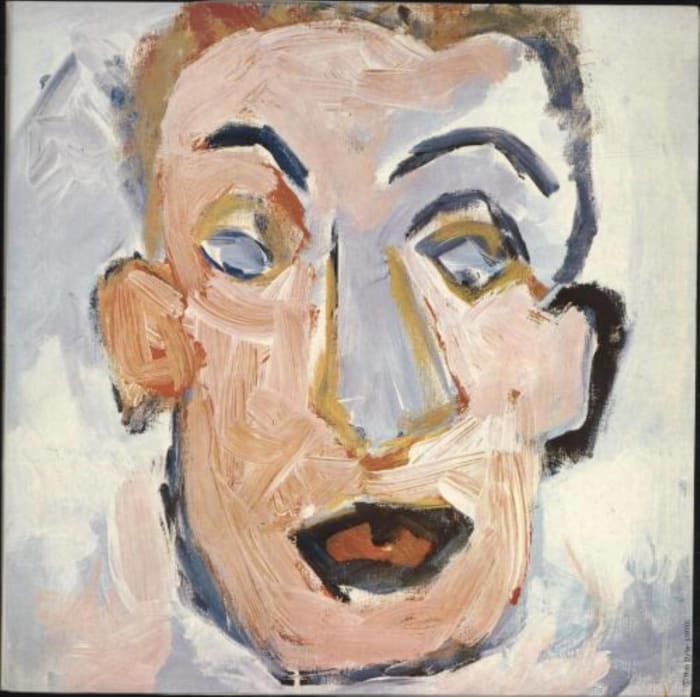
“What is this s**t?” Greil Marcus’ infamous pan of this 1970 fiasco says it all. The concept itself is fine: After a decade-plus of nearly uninterrupted genius, Dylan was more than entitled to throw together a double LP of covers — of other’s songs and his own. But it’s lazy in every regard: Dylan sounds bored at best, contemptuous at worse; Bob Johnston’s production is amateurish; the song selections are utterly random. If this was truly Dylan’s “f— you” to his outsized legacy, he should’ve gone all the way and covered “Volare." Fortunately, Dylan had “New Morning” waiting in the chamber.
Emil Jannings throws in with the Nazis

Emil Jannings’ Hollywood career was over almost as quickly as it had begun. The German actor had soared to stardom during the silent era in the films of Froelich, Buchowetzki, and Murnau. This popularity brought him to America, where he won the first-ever Best Actor Oscar for his performances in “The Last Command” and “Sins of the Father." Alas, the advent of talkies revealed Jannings’ indecipherably thick German accent, forcing him back to his homeland where, ironically, he co-starred in “The Blue Angel," aka the film that launched Marlene Dietrich’s Hollywood career. As the Nazis seized control of Germany, many of the most prominent German artists fled the country. Jannings, however, remained, actively participating in the filming of Nazi propaganda and receiving an “Artist of the State” honor from Joseph Goebbels for his efforts. Once the war was over, Jannings never worked again.
Chevy Chase: Late-night talk show host
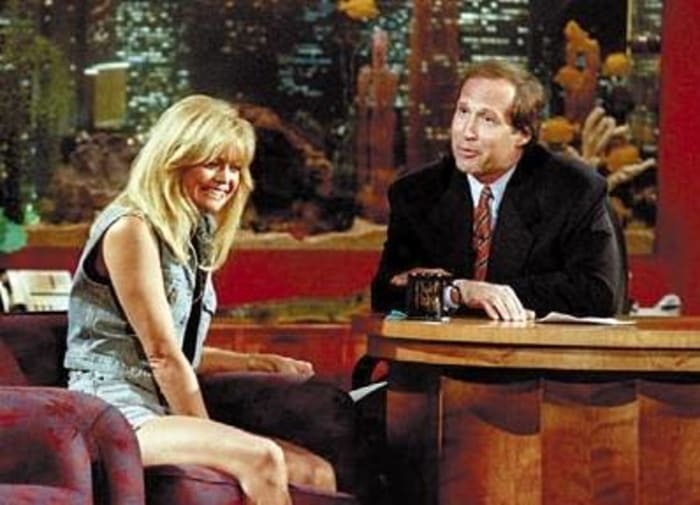
When Johnny Carson bid farewell to “The Tonight Show” in 1992, everyone in Hollywood lost their damn-fool minds and decided they alone could fill the late-night talk void left by the showbiz legend. With Leno succeeding Carson, Letterman moving into the Ed Sullivan Theater for CBS’s new “Late Show” and Arsenio Hall threatening to “kick Jay’s āss” with his already popular syndicated talk show, there didn’t seem to be much in the way of ratings daylight. But celebrities still jumped into the fray, and no one landed with a louder thud than Chevy Chase. With his career already in decline, Chase flailed through desperately unfunny monologues, struggled to banter with guests (even former colleagues like Dan Aykroyd and Al Franken), and occasionally filled airtime by tickling the ivories of a keyboard situated at his desk. The show grew queasily fascinating when his recruited audiences started heckling him. Finally, a little over a month into its run, Fox pulled the plug.
Magic Johnson: Late-night talk show host
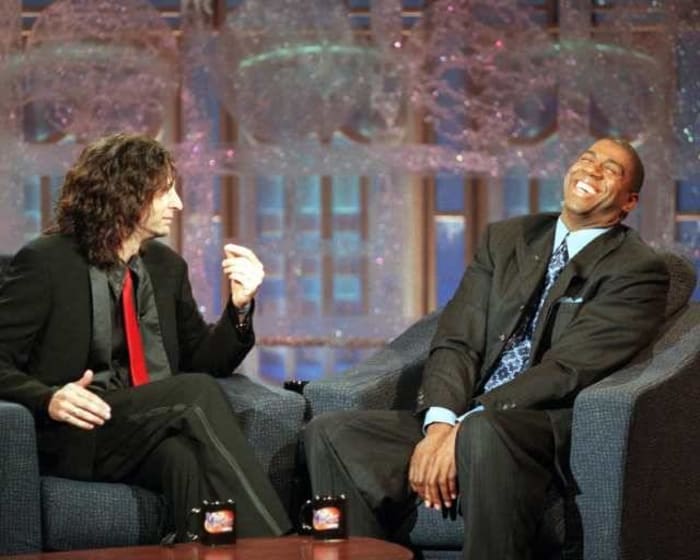
Earvin “Magic” Johnson could do it all on the basketball court but get him in front of a TV camera and you’re lucky if all you get is insipid analysis. (He’s been cycled through NBA studio shows for a reason.) This has never been more excruciatingly apparent than his three-month stint on “The Magic Hour," a cookie-cutter late-night talk show that lives in infamy thanks to Howard Stern, who lampooned the show every morning on the radio until Magic had no choice but to invite him on. Ratings-wise, this was smart, but Stern made Magic pay for the favor by performing “Wipe Out” with a group of uniquely gifted individuals farting out the drum solo. The only thing Magic got right was hiring the great Sheila E. to be his bandleader.
Terence Trent D'Arby's ego runs amok
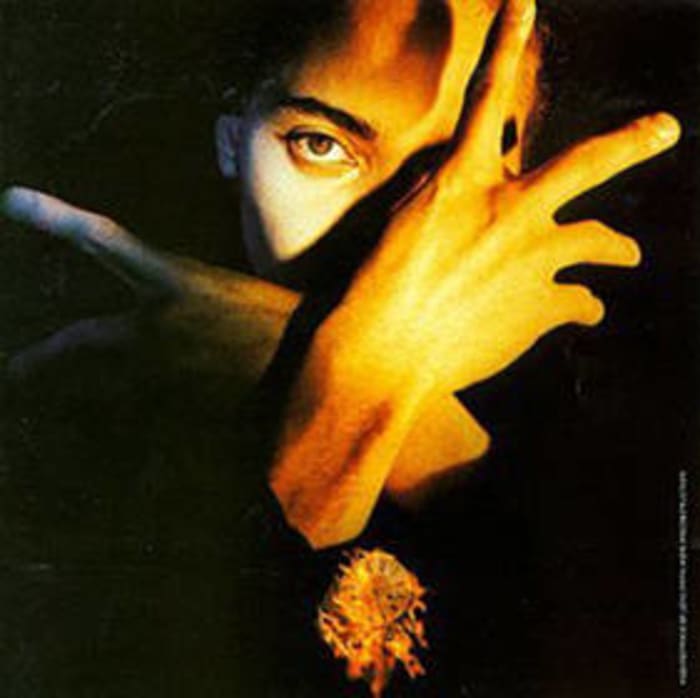
The tragedy of Terence Trent D’Arby’s career was Terence Trent D’Arby. A sensationally gifted songwriter and performer, D’Arby, who now goes by Sananda Francesco Maitreya, painted a bulls-eye on his back while his debut album, “Introducing the Hardline According to Terence Trent D’Arby," rocketed up the charts. He told an NME interviewer his LP was better than The Beatles’ “Sgt. Pepper’s Lonely Hearts Club Band” (frequently ranked as the greatest rock album ever) and dialed it back a little for Rolling Stone when he claimed he wanted to be the next Jerry Lee Lewis. That his first LP was excellent could not be denied. The proof would be in his sophomore effort. Unfortunately, “Neither Fish Nor Flesh” lived up to its title: It was a concept album in search of a concept, which, despite Maitreya’s virtuosic talent, failed to hook listeners. Maitreya had made enemies in the media and the industry, and he paid dearly for it (even when his third album, “Symphony or Damn," wound up being one of the best of the decade).
George Lucas decides to direct "The Phantom Menace"

To be clear, George Lucas was always going to direct “The Phantom Menace” in the same way that he “directed” “The Empire Strikes Back” and “Return of the Jedi." The visionary filmmaker would conceive the story, design the set pieces, supervise the visual f/x…basically, he would do everything save for direct the actors. This is because Lucas knows his strengths. So it makes sense that he’d take this approach with the prequel trilogy, and, well, he almost did. While he was prepping “The Phantom Menace," Lucas asked playwright-director David Hare, who’d helmed an episode of “The Young Indiana Jones Chronicles," if he’d handle the human element of the shoot. Hare thought it was “a lovely idea” but ultimately “didn’t think it was my thing." It’s unclear whether Lucas approached other directors to split the labor in this manner, but it is sadly undeniable that he directed the actors in all three prequels.
Ted Danson dons blackface to roast Whoopi Goldberg
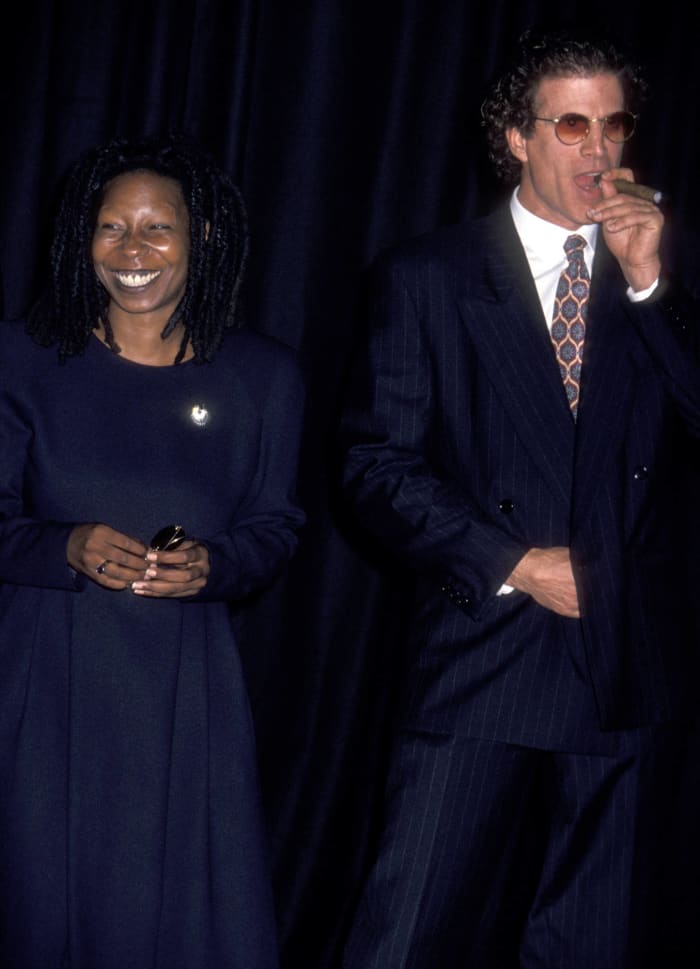
Even in the tasteless tradition of Friars Club roasts, Ted Danson’s decision to don blackface and roast his then-girlfriend, Whoopi Goldberg, while hurling racial slurs and eating watermelon was nothing if not bold. There are mitigating circumstances here. Goldberg was aware of the bit, helped Danson write his material, and recommended the makeup artist. Also, the roast was attended by celebrities like Montel Williams and Mayor David Dinkins, both of whom were probably expecting something akin to the tamed-down, televised, Dean Martin-hosted affairs from the 1970s. (Goldberg’s roast was not for broadcast.) But there’s a high degree of difficulty in pulling off something this ballsy (see “Tropic Thunder”), and Danson fell horribly short of that threshold. Apologies were immediately issued, and they were obviously sincere. This was just a case of two seemingly decent people miscalculating on a dire scale.
Bruce Willis "returns" as Bruno
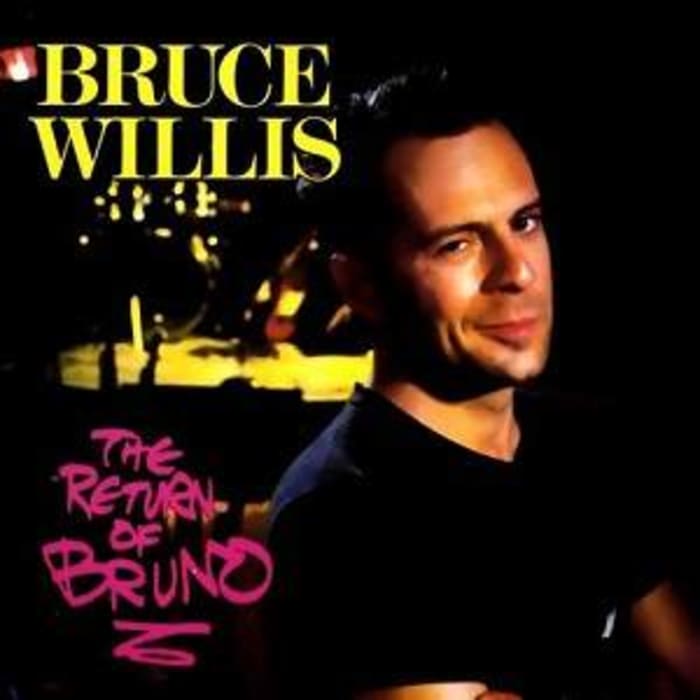
Bruce Willis was in the third season of “Moonlighting” when he masterminded this vanity production centered on the fictional Bruno Radolini, a blue-eyed-soul legend whose influence on popular music has been forgotten over time. On one hand, as a piece of cultural appropriation, this is no more objectionable than John Belushi and Dan Aykroyd playing The Blues Brothers. But when it came to the movie, at least Belushi and Aykroyd knew to step aside and let the legends shine. Alas, Willis’ HBO mockumentary places him front and center, and he seems to believe he’s killing it on the microphone — via his bar-singer voice or frat-house-front-porch harmonica. No one had the heart to tell him. This all works so much better in “Hudson Hawk," where Willis and Danny Aiello trade bars of “Swinging on a Star” and “Side by Side."
Joaquin Phoenix's "I'm Still Here"
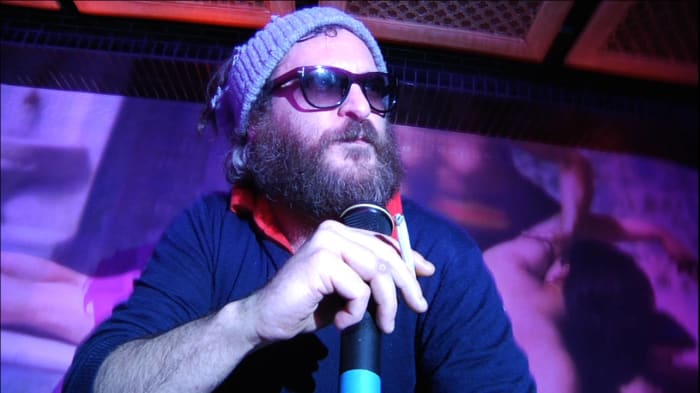
If you’re going to make a mockumentary, here’s an idea: Have a roadmap. When Joaquin Phoenix and Casey Affleck set out in 2008 to make a movie critical of reality television while indulging in the staged insanity that keeps morons tuned in week to week, they quickly lost their bearings and found themselves stuck perpetuating a fraud everyone had sniffed out from the beginning. The resulting movie, “I’m Still Here," plays like a high school student bullshıtting his way through an essay the night before it’s due. Phoenix and Affleck are immensely talented actors, but they committed to a bad bit and refused to cut their losses. Lawsuits ensued, and Phoenix didn’t appear in a movie until 2012.
Michael Richards does some racist crowd work

Some comedians are better at handling hecklers than others. Many have go-to ripostes to silence these interrupting cretins. Michael Richards, who’s more of a sketch comedian than a standup, had nothing when a group of loud patrons distracted him from his set at the Laugh Factory in 2006. So he lost his mind and started hurling the n-word at them. Video of the incident was all over the internet the following day, and there was no benefit of the doubt to be given. Richards wasn’t just hurling epithets, he was making allusions to slavery and lynching. It was ugly. A few days later, an apologetic Richards went on the “Late Show with David Letterman” via satellite, and the world moved on. It’s hard to say to what degree his career was damaged because he wasn’t working on TV or in movies a whole lot prior to the incident, but aside from appearing on his friends’ shows, he’s been MIA.
Charles Rocket drops an f-bomb on "SNL"
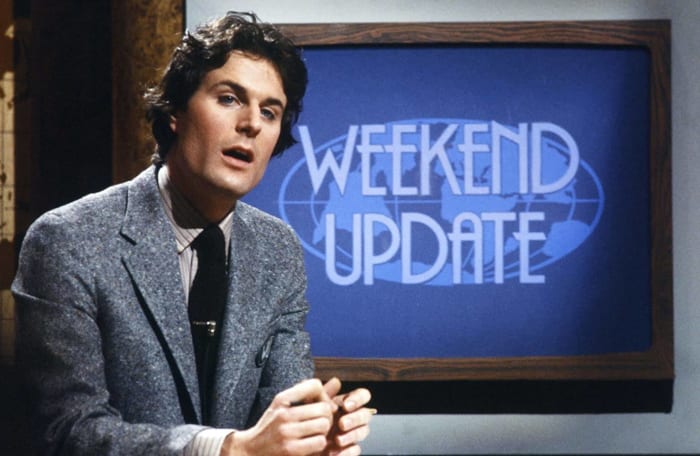
When the remaining original cast left “Saturday Night Live” in 1980, the show’s new executive producer, Jean Doumanian, was tasked not just with rounding up a brand new cast but also with finding a breakout star or two to generate buzz. Enter Charles Rocket, who was plopped behind the Weekend Update desk and billed as the new Chevy Chase. He didn’t lack for confidence, but the writing certainly lacked for wit. Critics savaged the new cast, and Rocket absorbed the brunt of their vitriol. With the ratings in the toilet, everyone was vulnerable, which made the live broadcast of Feb. 21, 1981, a particularly rotten occasion for Rocket to blurt out the f-word. Though the obscenity was uttered during the show’s closing moments, it offered the network a perfect opportunity to place the show on hiatus and retool it. Rocket was fired, and though he worked steadily until his tragic death in 2005, he never found the stardom for which he seemed destined.
John Travolta's "Battlefield Earth"

John Travolta’s dream of adapting L. Ron Hubbard’s loopy sci-fi tome, “Battlefield Earth," was finally realized in 2000 thanks to the free-spending, celeb-enabling now-defunct Franchise Pictures. Directed by Oscar-nominated production designer Roger Christian (whose “The Sender” is one of the most underrated horror films of the 1980s), the film’s vanity pedigree —this was Travolta’s paean to Scientology founder Hubbard — rendered it a joke before it hit theaters. Critics took it to the woodshed and then to another when the first one collapsed from overuse, while audiences polled by Cinemascore rated it a dreadful D+. Travolta’s box office bankability took a massive hit; though he appeared in a few ensemble hits over the next decade, he could no longer open a movie on his own.
Five filmmakers pass on "The Godfather"
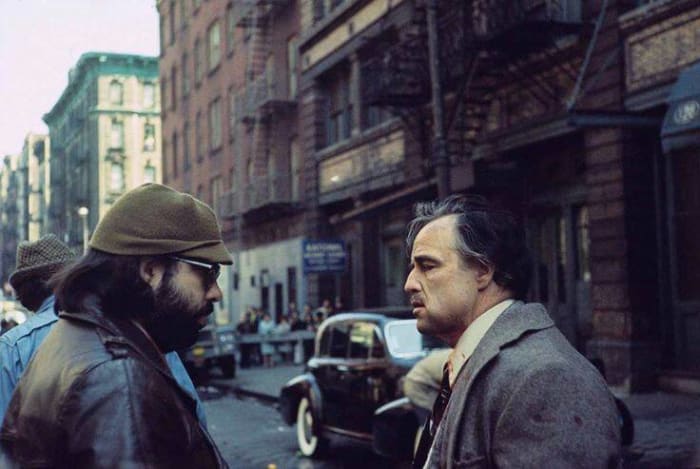
How does Sergio Leone’s “The Godfather” sound? It could’ve been a reality had the Italian filmmaker, who’d just worked with Paramount on “Once Upon a Time in the West," not been enamored with his own gangster epic (which wound up being “Once Upon a Time in America”). Studio honcho Robert Evans then offered the project to an up-and-comer named Peter Bogdanovich, who declined due to his disinterest in the mob (which freed him up to make “What’s Up, Doc?”). Evans subsequently approached a trio of hot directors (Peter Yates, Arthur Penn, and Costa-Gavras) and a couple of old masters who could use a hit (Robert Brooks and Otto Preminger). When they all passed, the studio took a chance on Francis Ford Coppola, who was ice cold coming off “The Rain People." While most of the aforementioned directors continued to have solid careers, all, save for Leone (and Bogdanovich in the short term), would’ve been better off making “The Godfather."
Mike Myers is "The Love Guru" for some reason
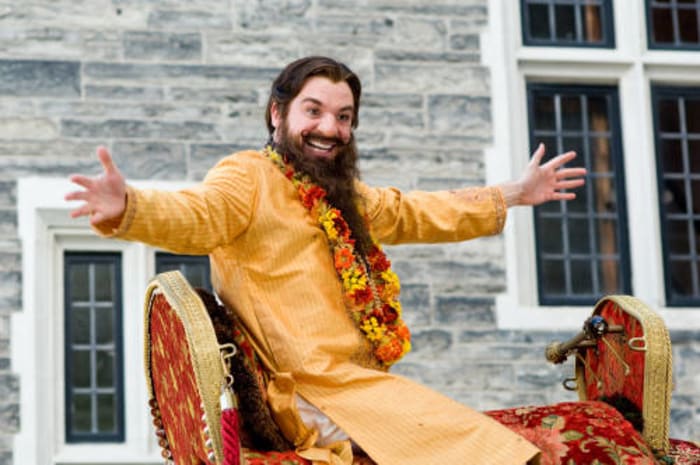
Mike Myers’ bid to launch a new franchise with a hazily conceived Deepak Chopra parody was DOA in 2008, and his career still hasn’t recovered. Or maybe this is what Peter Sellers post-“The Fiendish Plot of Fu Manchu” would’ve looked like. It’s a button-mashing attempt to combine some of Myers’ longtime obsessions (The Beatles, hockey, and dıck jokes), but his Guru Pitka character lacks Austin Powers’s specificity or gleeful untowardness. It’s a narrow parody that should’ve been deep-sixed in development. It also has the worst opening credit sequence since “The Pest."
Madonna and Guy Ritchie remake "Swept Away"

On paper, Lina Wertmüller’s 1974 classic about a spoiled rich woman who gets stranded on a Mediterranean island with a hunky communist seems like the kind of erotically charged material that Madonna could knock out of the park with the right director. But opting to remake the film with her then-husband, Guy Ritchie, best known for his testosterone-soaked crime films (“Lock, Stock, and Two Smoking Barrels” and “Snatch”), made it look like a vanity production — which it was. Though Ritchie’s version doesn’t break new ground thematically, it’s a stylish, sexy lark that flies by 89 minutes. Unfortunately, prominent critics didn’t see it that way at the time. Madonna received the worst reviews of her acting career, which might explain why she hasn’t given a major live-action performance since.
Thomas Harris kills "Hannibal"
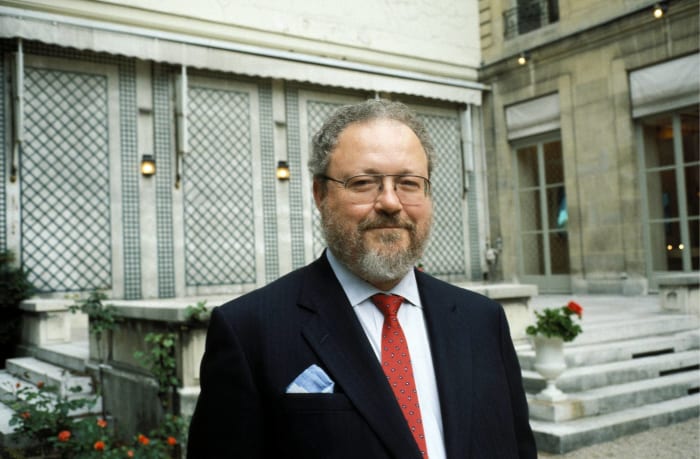
Some artists have only a few great works in them, and that’s OK. Between 1975 and 1998, Thomas Harris had written three novels: “Black Sunday," “Red Dragon” and “The Silence of the Lambs." They are perfectly orchestrated thrillers that hook you from Page 1 and, if you’ve got the spare time, can easily be consumed in one sitting. And while they’re also grist for gripping big-screen adaptations, no one could’ve predicted: “The Silence of the Lambs” becoming a worldwide box office smash and sweeping the major categories at the 1992 Academy Awards. For years, readers, moviegoers, publishers, booksellers, and studios alike clamored for a sequel. In 1999, Harris finally delivered it. If you were a fan, you took that book home after work, disconnected your phone, and, about 100 pages in, finally conceded something was off. The book reads like Harris’ rejection of Lecter’s popularity as if he were uncomfortable with the public’s affection for his monster. That he sacrifices Clarice Starling to seemingly punish the reader felt unduly cruel. Ridley Scott’s adaptation reworked the ending, but the spell had been broken. Bryan Fuller’s NBC series made Hannibal interesting again, but it was never more than a cult hit. Maybe it's best this way.
The voices instruct M. Night Shyamalan to make "Lady in the Water"
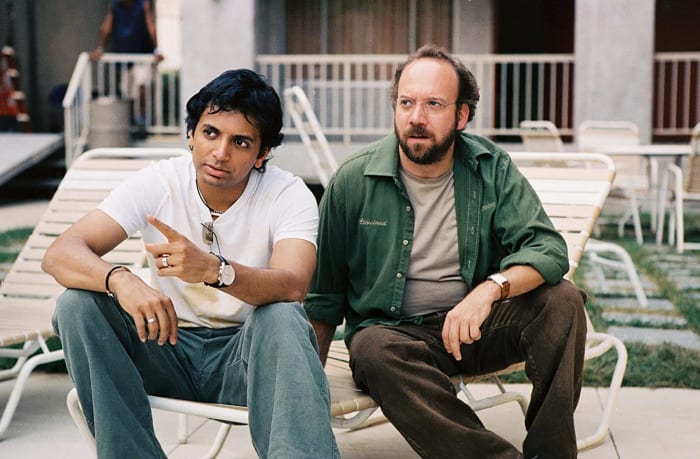
It’s rare that a studio is right to rein in a great director’s vision, but M. Night Shyamalan’s “Lady in the Water” was a project badly in need of a tighter narrative and thematic focus. It’s a fascinating failure, and, at times, the most enchanting movie of the director’s career. But it’s ultimately a collection of moments unmoored to whatever story Shyamalan is trying to tell. Disney executives Nina Jacobson and Dıck Cook tried to warn him; they didn’t understand what Shyamalan was trying to get across with his horror-fantasy, which, as detailed in the brutally candid behind-the-scenes book, “The Man Who Heard Voices," he took as a personal attack. Though commissioned by Shyamalan, the book is indicative of everything that’s wrong with the filmmaker’s process: He’s painfully precious with his ideas and hostile to notes. In any event, Jacobson was right: After a respectable opening, the movie’s box office fell off a cliff, indicating bad word of mouth. His next two films, “The Happening” and “The Last Airbender," were atrocious. He had a slight creative renaissance with “Split," but the visionary mojo that captivated audiences in “The Sixth Sense," “Unbreakable” and “Signs” is gone.
Jerry Lewis' "The Day the Clown Cried"

Comedian Harry Shearer is one of the few people alive today who’s seen Jerry Lewis’ shelved drama about a clown who entertains children confined to a Nazi concentration camp. “This movie is so drastically wrong,” Shearer told Spy in 1992. “Its pathos and its comedy are so wildly misplaced that you could not, in your fantasy of what it might be like, improve on what it really is.” A group of well-known comics in Los Angeles clandestinely staged readings of the screenplay in the early 2000s, and, rest assured, it is every bit as misconceived as Shearer claims. The script frequently indulges in standard Lewis shtick until the shocking finale, wherein Lewis’ clown leads the children, ala the Pied Piper, to the showers at Auschwitz. As a filmmaker, Lewis had never walked a tonal tightrope like this before, and it is hard to believe, coming off some of the worst movies of his career, he suddenly rose to the occasion. Up until his death, Lewis said he was embarrassed by the movie and insisted that it would never be publicly screened. So far, so suppressed.
Jeremy Smith is a freelance entertainment writer and the author of "George Clooney: Anatomy of an Actor". His second book, "When It Was Cool", is due out in 2021.
More must-reads:
Trending in Entertainment
Customize Your Newsletter
 +
+
Get the latest news and rumors, customized to your favorite sports and teams. Emailed daily. Always free!
Use of this website (including any and all parts and
components) constitutes your acceptance of these
Terms of Service and Privacy Policy.

